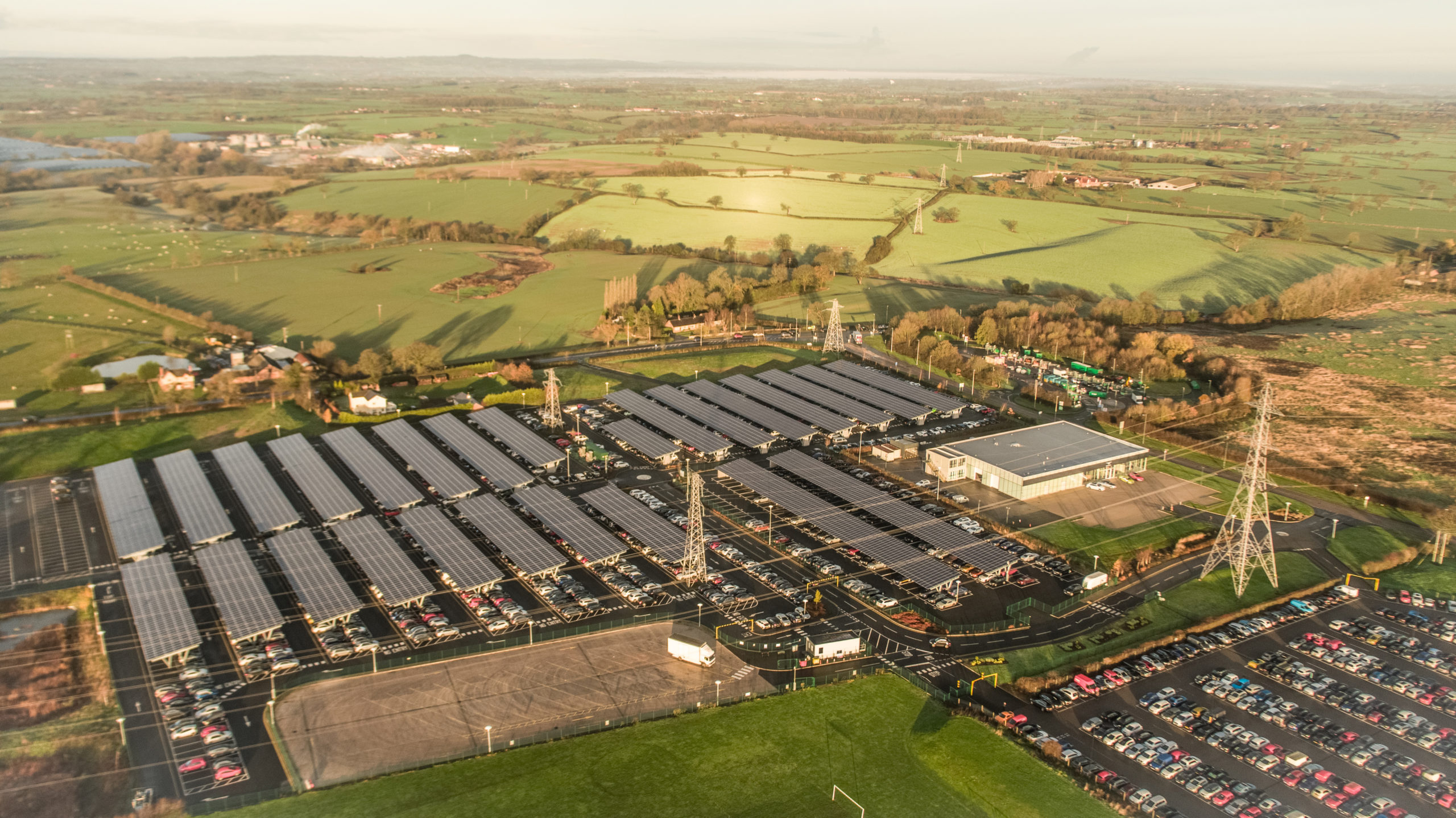British firms’ on-site, on-roof or on-campus generation of clean power could supplant imported gas as early as 2035, corporate supplier nPower Business Solutions calculates.
Solar panels on factory roofs – as on Bentley Motors’ Crewe plant, pictured – on-campus turbines, batteries and biogas plants pumping directly into enterprise consumption could strip as much as 6.7 million tonnes of carbon emissions out of UK power by 2035, say the supplier’s new report, commissioned from consultants linked to Imperial College, London.
Carbon-free electricity could be sourced dependably at prices ranging as low as £49 per MWh, – lower than current wholesale rates – according to nPower’s The Future of Energy: The critical role of business in a zero-carbon world.
Starting point for the study is the 16 TWh of power identified in the Climate Change Committee’s Sixth Carbon Budget, as likely to be needed in 2035 from shipped or pumped in natural gas.
Modelling by Dr Gabriel D. Oreggioni working as Imperial Consultants sees that total as substitutable by established technologies, and within the following ranges:
- On-site wind capacity: between 6 and 29 GW
- Installed roof-top solar PV: 6.5 GW
- Biogas power generation: up to 16 TWhe
- Hydrogen and biomethane injection: 33 and 7.5 TWh, respectively
nPower Business Solutions boss Anthony Ainsworth explained: “Earlier this year, our Business Energy Tracker revealed that 77% of businesses put energy as their top business risk. It also showed that, to protect themselves from this risk, many businesses are installing sustainable on-site generation to both reduce emissions and increase resiliency.
nPower’s study – available for download here – assess routes to a future where businesses are not only more self-sufficient, but where the power they generate could help reduce energy costs.
“For us, this report is really exciting“ Ainsworth went on, “seeing the potential for businesses to become central to a changing, decarbonised and decentralised energy system, that is powered by renewables”.
“For businesses, it also shows the investment decisions they make now when it comes to sustainable on-site generation could reap rewards today and into the not-too-distant future including lower energy costs, increased resiliency, reduced emissions and a more stable power supply.”
Policy interventions by government are inevitably needed to unlock the power potential of business, the study points out. Streamlining planning rules and more tax incentives top that list, as Anthony Ainsworth argues:
“Short-term plans are in place to support businesses this winter, with the Energy Bill Relief Scheme providing some protection against rising prices.
“However, there is also a need for a longer term approach, both in terms of incentivising energy efficiency and encouraging more businesses to consider investing in sustainable on-site generation”, the nPower boss warned.
The work chimes with similar analysis on gas replacement released this week by academics in the Energy & Climate Intelligence Unit.
According to the ECIU, in 40 days since October 1 – a notional start of winter – , renewables have already displaced the equivalent of 3% of UK annual gas demand and 6% of UK net gas imports. These numbers will continue to grow during the winter, says the ECIU.
In those 40 days, wind, hydro and solar generation contributed 13TWh. Generating that output using gas power stations instead would have required 27TWh more gas – the equivalent needed to heat 2.9 million homes this winter.
The ECIU uses those numbers to launch its Winter Power Tracker, tallying quantities of power generated this winter by gas, renewables and other sources.
Nuclear, biomass and other sources of generation generated around 6TWh in the 40 day period, a total requiring gas equivalent to 1.5 % of annual UK demand.
Grid-scale batteries hosting surplus green power are increasingly taking over gas’s role as back-up.
Grid-scale storage units of 50 MWh and above has leapt 400% from last winter reaching 2.5GW already operational this winter. A staggering 20GW more of unbuilt amp hotels and coloumb crèches await in developers’ planning pipelines, says the ECIU, citing monthly figures from D-BEIS’s Renewable Energy Planning Database. Pumped hydro storage, too, is set to rise by 130%, to 6.5GW.
“Every swoop of a turbine blade means less gas that we have to buy, said Dr Simon Cran-McGreehin, the ECIU’s head of analysis.
“As battery capacity and pumped hydro expand, we’ll be less dependent on gas to play its ‘balancing’ role, insulating us from international gas markets. The same goes for insulation and electric heat pumps. If government ramps up investments, next winter could be less challenging for the grid and less worrying for households.”
No country in Europe at present depends more on gas than the UK. It provides 40% of electricity generation and 85% of our home heating, much of it wasted in British homes, the leakiest in western Europe. The International Monetary Fund (IMF) reported this summer that the cost impacts of the gas crisis are worse for households in the UK than in any other country in Western Europe.
Without wind, hydro and solar meeting 30% of Britain’s yearly electricity demand, gas power plants would be operating more often, burning as much as 70% more gas each year – adding almost a quarter (23%) to the UK’s total gas demand and putting up imports by almost half (45%), according to the ECIU.
Renewables push down costs of wholesale electricity , the ECIU points out, partly by displacing expensive gas power plants, and partly through Contracts for Difference. These paid back over £700million in the twelve months to October 2022 and are forecast to pay back at least a further £2billion by the end of Q1 2023.




